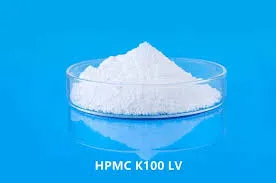
Sep . 29, 2024 04:14 Back to list
Ensuring Safety Standards in HPMC Utilization for Pharmaceutical Applications
Understanding HPMC Safety Importance and Guidelines
Hydroxypropyl Methylcellulose (HPMC) is a widely used compound in various industries, including pharmaceuticals, food, cosmetics, and construction. Given its extensive application, understanding the safety of HPMC is crucial for manufacturers, consumers, and regulatory agencies. This article delves into the safety aspects of HPMC, including its properties, potential risks, and guidelines for safe usage.
What is HPMC?
HPMC is a semi-synthetic polymer derived from cellulose, modified to enhance its solubility and performance in various applications. It is commonly used as a thickener, binder, emulsifier, and film-forming agent. In pharmaceuticals, HPMC is often used in the formulation of controlled-release medications, while in the food industry, it serves as a stabilizer and thickening agent. HPMC's versatility and effectiveness make it indispensable in many products.
Safety Profile of HPMC
The safety profile of HPMC is well-established, and it is generally regarded as safe (GRAS) when used as intended. Regulatory bodies such as the U.S. Food and Drug Administration (FDA) and the European Food Safety Authority (EFSA) have evaluated HPMC and deemed it safe for consumption and application in various products. However, as with any chemical compound, there are considerations to keep in mind regarding its safe use.
1. Toxicity Numerous studies have shown that HPMC exhibits low toxicity. Acute toxicity tests indicate that HPMC has a high LD50 (lethal dose for 50% of the test subjects), suggesting that it poses minimal risk in normal use scenarios. However, like any substance, excessive exposure or misuse could lead to adverse effects.
2. Irritation and Allergic Reactions While HPMC is generally non-irritating, some individuals may experience mild irritation or allergic reactions, particularly when used in cosmetic or topical applications. It is essential for consumers to conduct a patch test before using products containing HPMC, especially if they have sensitive skin or a history of allergies.
3. Inhalation Risks In industrial settings, fine particles of HPMC may pose a risk if inhaled. Facilities using HPMC should implement adequate ventilation systems and encourage the use of personal protective equipment (PPE) such as masks to minimize inhalation exposure.
hpmc safety

Guidelines for Safe Use
To ensure the safe use of HPMC, several guidelines should be followed
1. Adhere to Concentration Limits When formulating products containing HPMC, manufacturers should adhere to recommended concentration limits established by regulatory bodies. This not only ensures safety but also maintains the efficacy of the product.
2. Conduct Allergy Testing Cosmetic and pharmaceutical companies should conduct thorough allergy testing to identify any potential reactions in sensitive individuals prior to widespread distribution. Labeling products with clear ingredient lists allows consumers to make informed choices.
3. Ensure Proper Ventilation in Manufacturing Facilities For industries using HPMC in powder form, it is crucial to maintain good ventilation and air quality in the workplace. Regular monitoring of airborne particles can help mitigate inhalation risks.
4. Educate Consumers Manufacturers should provide education on the safe use of products containing HPMC. This includes information about potential allergies, recommended application methods, and signs of adverse reactions.
5. Follow Regulatory Guidelines It is imperative for companies to comply with all relevant regulations and safety standards when producing and marketing products containing HPMC. Being aware of local and international regulations can help ensure the safety of consumers.
Conclusion
The safety of Hydroxypropyl Methylcellulose (HPMC) is well-documented, with appropriate measures in place to mitigate risks associated with its use. By understanding its properties, potential hazards, and adhering to safety guidelines, manufacturers and consumers can harness the benefits of HPMC while minimizing risks. As research continues to evolve, ongoing vigilance and adherence to safety practices will ensure that HPMC remains a safe and effective ingredient across various industries. Whether in pharmaceuticals, food products, or personal care items, HPMC has proven to be an asset that, when used responsibly, contributes positively to consumer health and safety.
-
Versatile Hpmc Uses in Different Industries
NewsJun.19,2025
-
Redispersible Powder's Role in Enhancing Durability of Construction Products
NewsJun.19,2025
-
Hydroxyethyl Cellulose Applications Driving Green Industrial Processes
NewsJun.19,2025
-
Exploring Different Redispersible Polymer Powder
NewsJun.19,2025
-
Choosing the Right Mortar Bonding Agent
NewsJun.19,2025
-
Applications and Significance of China Hpmc in Modern Industries
NewsJun.19,2025







